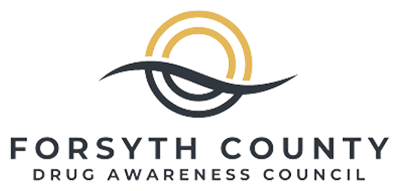What is Prevention?
Simply put, drug prevention programs help people to avoid using drugs or developing dependence on them. However, we take a broader view and work to help children, youth, and adults recognize their potential as valuable members of their community. We recognize that there are a number of factors that put individuals at risk for substance abuse, including biological processes, personality traits, mental health disorders, and family neglect or abuse. In addressing these complex factors, prevention must be based on scientific evidence and proven methods. We adhere to developed standards, guidelines, and tools to support the development of effective prevention that contributes to the engagement of children, young people, and adults with their families, schools, workplaces, and community.
Want to join us? Our general council meetings are held on the first Wednesday of every month from 8:00 a.m. until 9:00 a.m. at the United Way, 240 Elm Street, Cumming GA 30040. Reach out to our Director Rachel Kayden at rachel@unitedwayforsyth.com for additional information.
We use SAMHSA's SPF.
Want to learn more about the Strategic Prevention Framework Model? It consists of the following:
- Assessment. Collect data to define problems, resources, and readiness within a geographic area to address needs and gaps.
- Capacity. Mobilize and/or build capacity within a geographic area to address needs.
- Planning. Developing a comprehensive strategic plan that includes policies, programs and practices created a logical, data-driven plan to address problems identified in the assessment.
- Implementation. Implement evidence-based prevention programs, policies, and practices.
- Evaluation. Measure the impact of the SPF and its implemented programs, policies, and practices.
Wonder what Type of Strategies We Use?
Here are seven strategies to affect community change:
- Provide information. Educational presentations, workshops or seminars, and data or media presentations (e.g., public service announcements, brochures, billboard campaigns, community meetings, town halls, forums, Web-based communication).
- Enhance skills. Workshops, seminars, or activities designed to increase the skills of participants, members, and staff (e.g., training, technical assistance, distance learning, strategic planning retreats, parenting classes, model programs in schools).
- Provide support. Creating opportunities to support people to participate in activities that reduce risk or enhance protection (e.g., providing alternative activities, mentoring, referrals for services, support groups, youth clubs, parenting groups, Alcoholics or Narcotics Anonymous).
- Enhance access/reduce barriers. Improving systems and processes to increase the ease, ability, and opportunities to utilize systems and services (e.g., access to treatment, childcare, transportation, housing, education, special needs, cultural and language sensitivity).
- Change consequences (incentives/disincentives). Increasing or decreasing the probability of specific behavior that reduces risk or enhances protection by altering the consequences for performing that behavior (e.g., increasing publish recognition for desired behavior, individual and business rewards, taxes, citations, fines, revocations/loss of privileges).
- Change physical design. Changing the physical design or structure of the environment to reduce risk or enhance protection (e.g., parks, landscapes, signage, lighting, outlet density).
- Modify/change policies. Formal change in written procedures, by-laws, proclamations, rules, or laws with written documentation and/or voting procedures (e.g., workplace initiatives, law enforcement procedures, and practices, public policy actions, systems change within government, communities, and organization).
Read more in the Handbook for Community Anti-Drug Coalitions.
